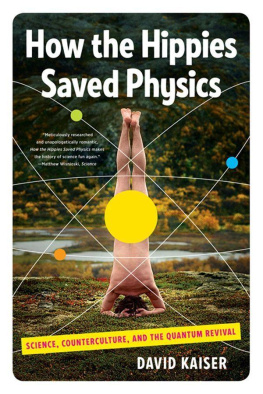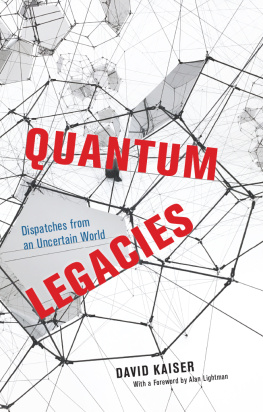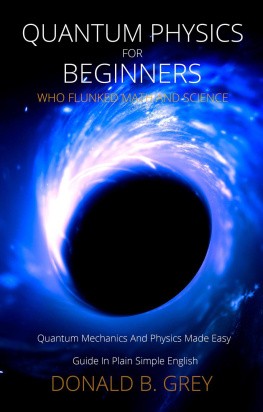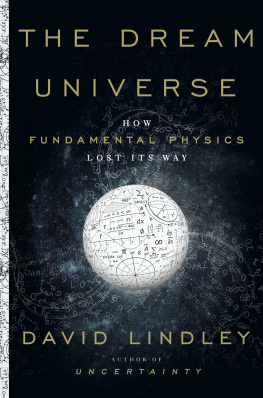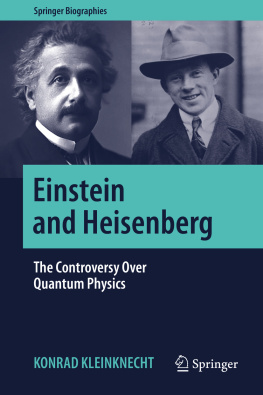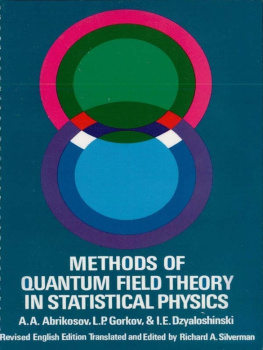W. W. Norton & Company
To the memory of my father, Richard A. Kaiser.
He was no hippie.
There must be thousands of young persons whose nervous systems were expanded and opened-up in the 1960s and who have now reached positions of competence in the sciences. We expect the new wave of turned-on young mathematicians, physicists, and astronomers are more able to use their energized nervous systems as tools to provide new correlations between psychology and science.
Introduction
T o most residents of Vienna, April 21, 2004, probably seemed like any other spring day in the Austrian capital. Students mulled over books in cafs; tourists delighted in the Hapsburg-era gardens, museums, and opera houses; and businesspeople scurried through their appointments. Amid the bustle, however, something magical happened. The citys mayor and the director of one of the citys largest banks collaborated on a breathtaking experiment. Working with physicists from the University of Vienna and a spin-off company, the mayor and banker performed the first electronic bank transfer using quantum cryptography. Specially prepared beams of light transmitted an unbreakable codean encryption keybetween the banks branch office and city hall. If anyone else had tried to listen in on the signal, the eavesdropping would have been detected easily and unambiguously. More important, any attempt to breach security would have destroyed the sought-after signal, scrambling it into harmless, random noise. With these safeguards in place, the mayors money wire went through without a hitch.
Three years later, residents of Geneva, Switzerland, participated in a similar feat. Government officials, in cooperation with their own local physicists, employed quantum encryption to protect the transmission of electronic votes cast in the Swiss national election. As in Vienna, the communications remained perfectly secure. The laws of physics had made sure of it.
Advances like these belong to the fascinating, flourishing field of quantum information science. An amalgam of topics with funny-sounding namesquantum computing, quantum encryption, quantum teleportationthe field sounds more like Star Trek with each passing year. These days quantum information science sports a multi-billion-dollar research program, ten thousand published research articles, and a variety of device prototypes. The field has leaped to the cutting edge of physics, catapulted by palpable enthusiasm among research scientists, industrial partners, and government agencies around the world.
The tremendous excitement marks the tail end of a long-simmering Cinderella story. Long before the huge budgets and dedicated teams, the field moldered on the scientific sidelines. To make the latest breakthroughs possible, researchers needed to grapple with quantum theory, physicists famously successful (yet infamously strange) description of matter and energy at the atomic scale. The equations had been around since the 1920s. But figuring out how to interpret those equations, to parse the symbols in words and scrutinize just what they implied about the mysterious workings of the microworldthat interpretive task had long since fallen out of favor. During the middle decades of the twentieth century, most physicists recoiled from such philosophical labor. They treated the interpretation of quantum theory as a fringe topic, a fine leisure-time diversion for retired researchers in their dotage, perhaps, but not the sort of activity on which rising stars should spend their time. Thirty years ago, readers who were interested in the unsettled debates over the interpretation of quantum theory had to hunt in some out-of-the-way places. In 1979, some of the most extensive coverage appeared in an unpublished memorandum from the Central Intelligence Agency and a feature article in Oui magazine. The latterno publication of the French embassywas Playboy s answer to Penthouse . Both items focused on work by physicists at the center of this story. The porn magazines discussion was by far the better researched and more accurate of the two.
Lost from view in todays hoopla is a story, equal parts inspiring and bizarre, of scientific striving in the face of long odds. The intellectual bedrock of quantum information sciencethe ideas that undergird todays quantum-encrypted bank transfers and electronic votingtook form in a setting that couldnt have been more different from the ivory tower of academe or the citadels of business and politics. In fact, the breakthroughs in Vienna and Geneva ultimately owe their origins to the hazy, bong-filled excesses of the 1970s New Age movement. Many of the ideas that now occupy the core of quantum information science once found their home amid an anything-goes counterculture frenzy, a mishmash of spoon-bending psychics, Eastern mysticism, LSD trips, CIA spooks chasing mind-reading dreams, and comparable Age of Aquarius enthusiasms. For the better part of a decade, the concepts that would blossom into developments like quantum encryption were bandied about in late-night bull sessions and hawked by proponents of a burgeoning self-help movementmore snake oil than stock option.
The woolly pursuits of the 1970s hearkened back to an earlier way of doing physics and of being a physicist. The roots of quantum information science stretch all the way back to the golden age of theoretical physics of the 1920s and 1930s, when giants like Albert Einstein, Niels Bohr, Werner Heisenberg, and Erwin Schrdinger cobbled quantum mechanics together. From their earliest wranglings, they found themselves tangled up with all sorts of strange, counterintuitive notions. Many have become well-known catchphrases like wave-particle duality, Heisenbergs uncertainty principle, and Schrdingers cat. Each signaled that atom-sized objects could behave fantastically different from what our usual experience would suggest. To Einstein, Bohr, and the rest, it seemed axiomatic that progress could only be made by tackling these philosophical challenges head on. Manipulating equations for their own sake would never be enough.
That style of doing physics did not last long. The clouds of fascism gathered quickly across Europe, scattering a once-tight community. The ensuing war engulfed physicists around the world. Torn from their prewar routines and thrust into projects of immediate, worldly significanceradar, the atomic bomb, and dozens of lesser-known gadgetsphysicists day-to-day activities in 1945 bore little resemblance to those of 1925. Over the next quarter century, Cold War imperatives shaped not just who received grants to pursue this or that problem; they left an indelible mark on the world of ideas, on what counted as real physics. Physicists in the United States adopted an aggressively pragmatic attitude. The equations of quantum mechanics had long since lost their novelty, even if their ultimate meaning still remained obscure. The pressing challenge became to put those equations to work. How much radiation would be emitted from a particular nuclear reaction? How would electric current flow through a transistor or a superconductor? As far as the postwar generation of physicists was concerned, their business was to calculate, not to daydream about philosophical chestnuts.
Before the war, Einstein, Bohr, Heisenberg, and Schrdinger had held one model in mind for the aspiring physicist. A physicist should aim, above all, to be a Kulturtrger a bearer of cultureas comfortable reciting passages of Goethes Faust from memory or admiring a Mozart sonata as jousting over the strange world of the quantum.
Before there could be a field like quantum information scienceand long before demonstrations like those in Vienna and Geneva could even be imagineda critical mass of researchers needed to embrace a different mode of doing physics once more. They had to incorporate philosophy, interpretation, even bald speculation back into their daily routine. Quantum physicists needed to daydream again.

